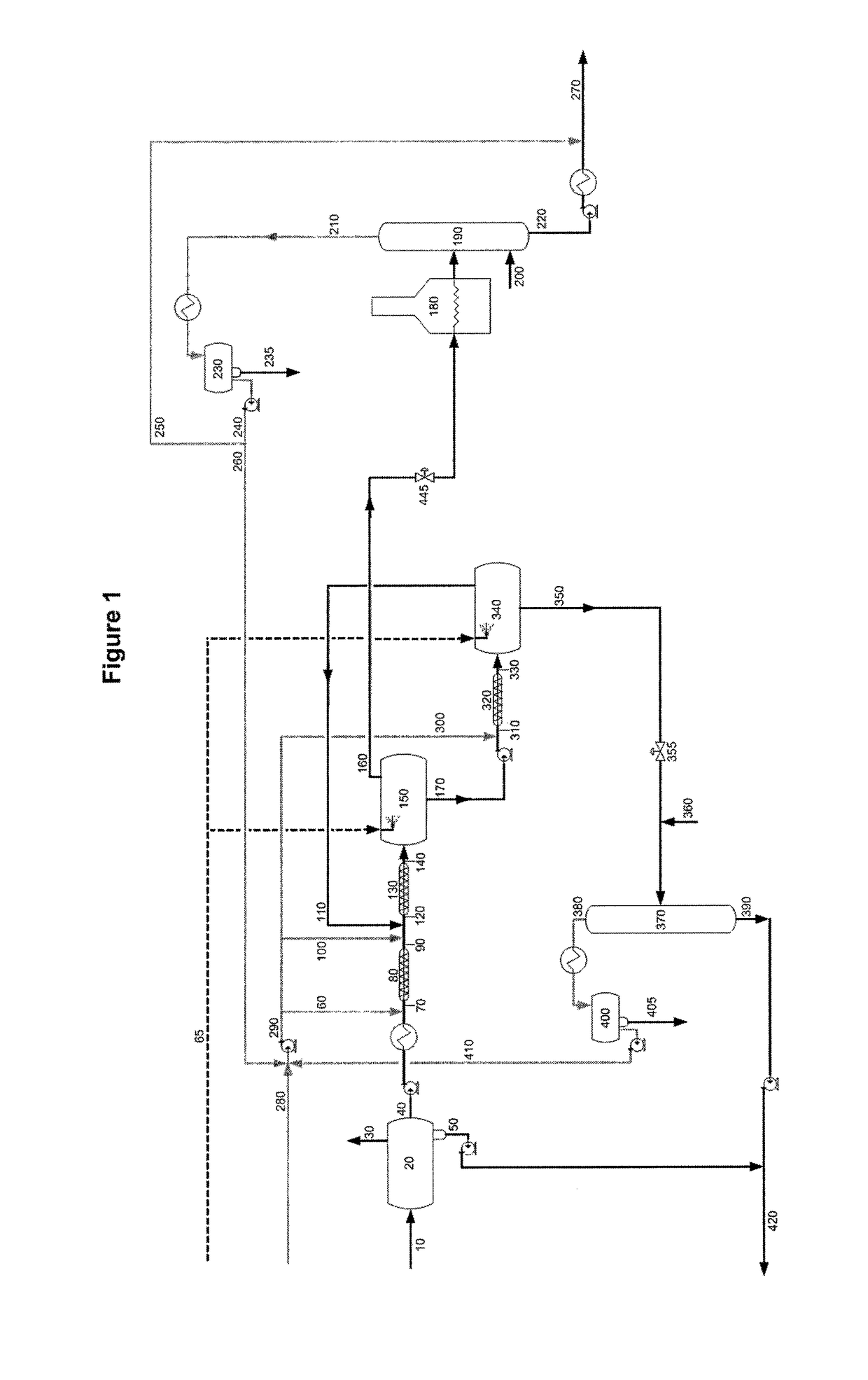Integrated central processing facility (CPF) in oil field upgrading (OFU)
a technology of integrated central processing and oil field, which is applied in the direction of thermal non-catalytic cracking, fuels, and treatment with plural serial stages, etc., can solve the problems of difficult processing of bitumen into clean and valuable products, and achieve the effects of increasing the collision between water droplets, facilitating the agglomeration of destabilized asphaltene particles, and increasing floc siz
- Summary
- Abstract
- Description
- Claims
- Application Information
AI Technical Summary
Benefits of technology
Problems solved by technology
Method used
Image
Examples
examples
[0080]The present invention is further illustrated in the following examples.
[0081]
TABLE 1Heavy Oil Recovery (Asphaltenes + Water + Mineral Solids Separation)FeedAthabasca BitumenHeavy Oil Recovery (Asphaltenes + Water + Mineral Solids Separation)25% w Bitumen, 75% w WaterExample 1.1Example 1.2Example 1.3Example 1.4Paraffinic Solventn-PentaneCondensaten-Hexanen-HeptaneParaffinic Solvent sp.gr. @ 15.56° C.0.63100.65400.66380.6882Extraction T, ° C.80808080Paraffinic Solvent / Bitumen, w / w3.095.604.144.37Recovered OilAsphaltenesRecovered OilAsphaltenesRecovered OilAsphaltenesRecovered OilAsphaltenesRecovered, % w83.3016.7083.6116.3983.4516.5583.4516.55Recovered, % v85.9714.0386.2313.7786.1013.9086.1013.90API8.0012.4712.3812.4212.42sp.gr. @ 15.56° C.1.01430.98291.20710.98341.20780.98321.20750.98321.2075Viscosity, cSt @ 7.5° C.8.2E+0647430534604928047640Viscosity, cSt @ 20° C.7.9E+058810975091008840MCR, % w14.337.1750.047.2550.447.2150.247.2150.24C5-Insoluble Asphaltenes, % w15.471.3186.10...
PUM
| Property | Measurement | Unit |
|---|---|---|
| particle size | aaaaa | aaaaa |
| temperature | aaaaa | aaaaa |
| temperature | aaaaa | aaaaa |
Abstract
Description
Claims
Application Information
 Login to View More
Login to View More - R&D
- Intellectual Property
- Life Sciences
- Materials
- Tech Scout
- Unparalleled Data Quality
- Higher Quality Content
- 60% Fewer Hallucinations
Browse by: Latest US Patents, China's latest patents, Technical Efficacy Thesaurus, Application Domain, Technology Topic, Popular Technical Reports.
© 2025 PatSnap. All rights reserved.Legal|Privacy policy|Modern Slavery Act Transparency Statement|Sitemap|About US| Contact US: help@patsnap.com



